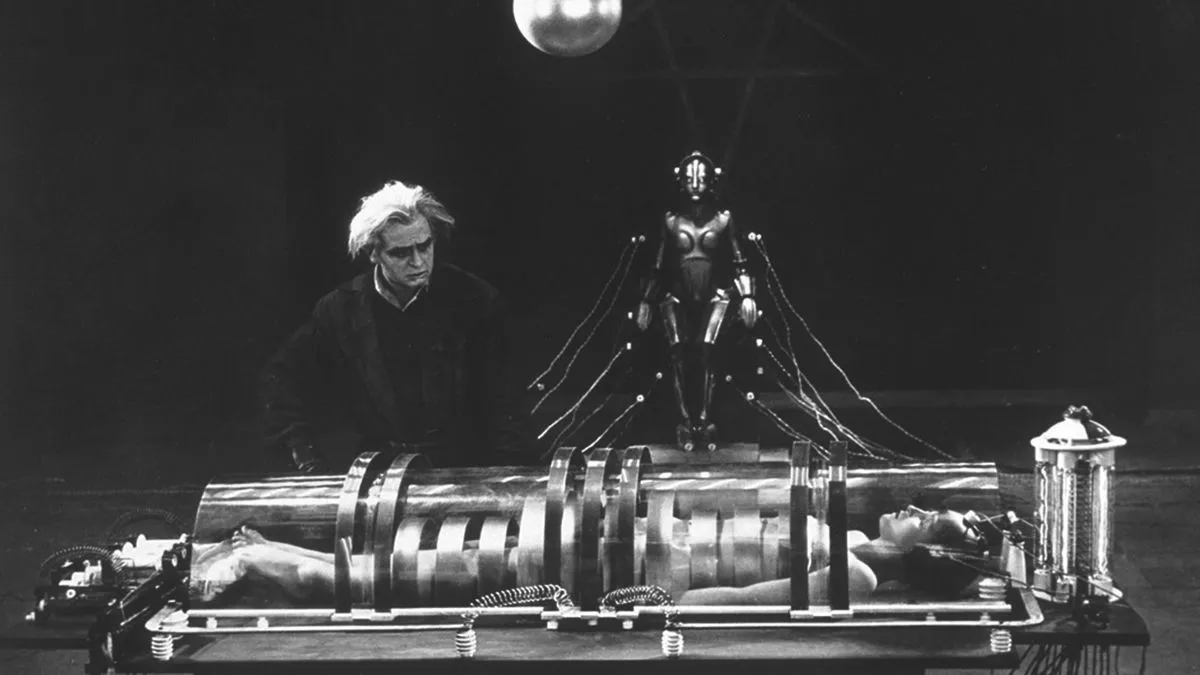CineTV is running a contest on films that are visually stunning - @cinetv/cinetv-contest-12-visually-stunning-films
I took my time on this one, giving a lot of thought on what film I wanted to feature, and as many other contributors on CineTV have focused on more contemporary films I decided to go vintage and feature Metropolis from 1927, directed by Fritz Lang. In the early era of film making, a lot of the techniques used then are still used to this day, and were the forerunner of many other techniques. They didn’t have computer technology to paint visually stunning imagery back then, and some of the effects that hey achieved with this film are brilliant.

Metropolis tells the story of a Utopian Society living a life of splendor, while a working underclass does all of the labor needed to support such a grand life-style. Basic running theme in the film. Workers, leaders, and the need for a mediator to bind the two together in harmony.

Backdrop of the city Metropolis with The Tower of Babel at its center. The film used miniatures on stop-motion animation for this scene. Although the aircraft were typical of the era, consisting of biplanes and monoplanes, the buildings were quite futuristic in appearance.

The workers at the machines. I am not sure if this shot is from the shift change at the beginning of the film, or the workers revolt near the end. This is a massive set, though, and shows that the workers at their stations working the machines that run the city.

Imagery of the workers being fed to Moloch after an accident happens with the machines, with numerous workers being injured. As the workers were being taken off the machines for aid, the scene shifted to this stunning piece where we see the workers being herded into the mouth of Moloch.
We then see the scientist, Rotwang (he puts the "Mad" in "Mad Scientist"), with Maria in a contraption and his robot in the background.

Rotwang is the main villain in this film, Hellbent on revenge on Joh Fredersen, the man who runs the city. Fredersen is kind of a minor league villain in that he controls the lives of everyone, Rotwang uses Maria to give his robot her appearance so that the robot can be used to incite the workers to revolt.

One of the many visual effects in this film, remarkable and stunning for a film made in the 1920s.
Metropolis took a couple of years to make, with filming beginning in May 1925 according to Wikipedia, and released in 1927, and was one of the most expensive films made at that time.
For Metropolis, special effects master Eugen Schüfftan developed the process of using mirrors to place actors on miniature sets, the forerunner of matte shots and chromakey techniques to do the same, a very cool innovation for 1927.
Metropolis is an important film from a historical perspective, and the remastered edition from 2010 contains some 25 minutes of footage believed to have been lost until a 16mm print was found in Argentina a few years before that.
If you are a film buff like I am, and have never seen Metropolis, I encourage you to watch the film.
Also, in the trivia on this film on IMDB, it mentions that the look of the robot was the basis for the design of C3PO in Star Wars, something I didn't know, but on reflection it sure seems to fit.
Thanks for stopping by.